We put the Oppo Find X6 through our rigorous DXOMARK Camera test suite to measure its performance in photo, video, and zoom quality from an end-user perspective. This article breaks down how the device fared in a variety of tests and several common use cases and is intended to highlight the most important results of our testing with an extract of the captured data.
Overview
Key camera specifications:
- Primary: 50MP 1/1.56″ sensor, 1μm pixels, 24mm equivalent f/1.88-aperture lens, AF, OIS
- Ultra-wide: 50MP 1/2.8″ sensor, 0.64μm pixels, 15mm equivalent, f/2.05-aperture lens, AF
- Tele: 50MP 1/1.56″ sensor, 1μm pixels, 65mm equivalent f/2.6-aperture lens, AF, OIS
Scoring
Sub-scores and attributes included in the calculations of the global score.
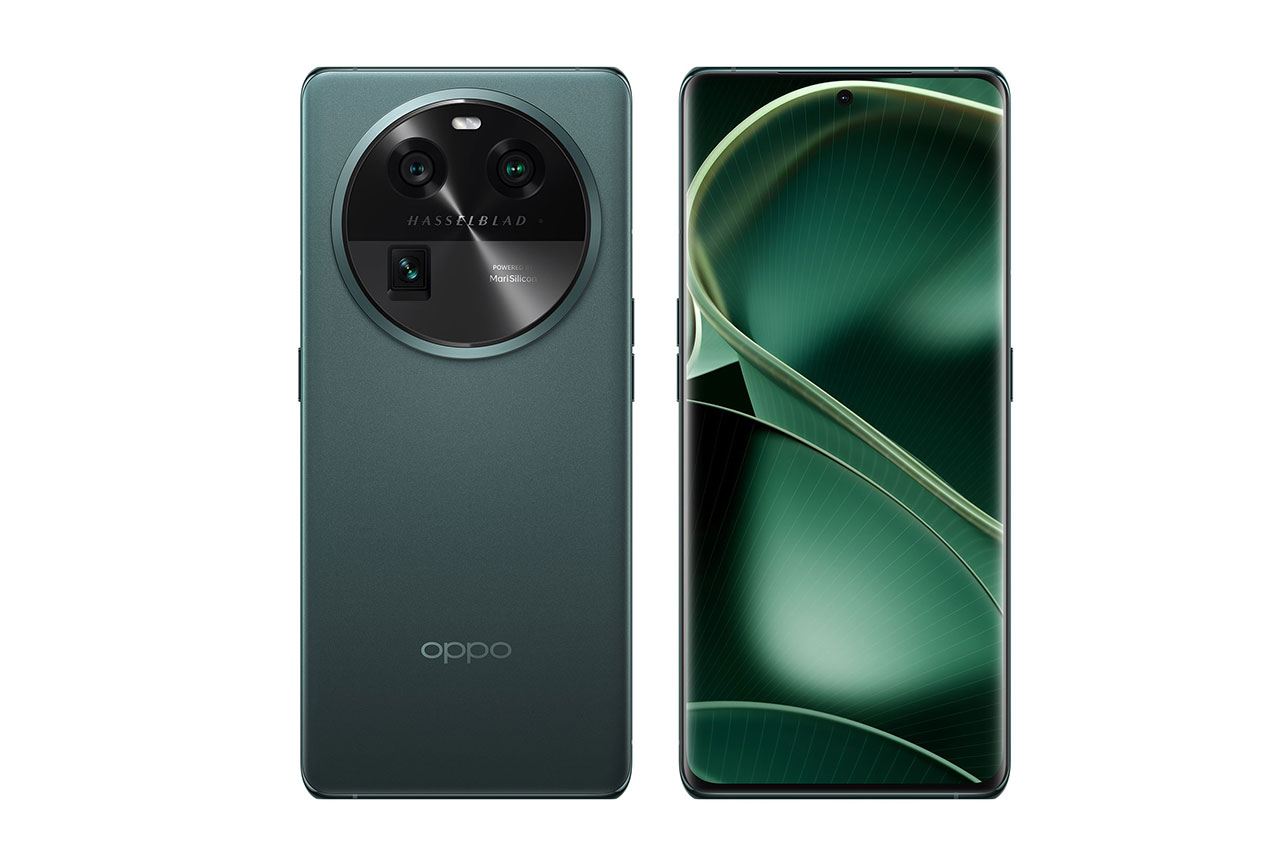
Oppo Find X6


Use cases & Conditions
Use case scores indicate the product performance in specific situations. They are not included in the overall score calculations.
Outdoor
Photos & videos shot in bright light conditions (≥1000 lux)
Indoor
Photos & videos shot in good lighting conditions (≥100lux)
Lowlight
Photos & videos shot in low lighting conditions (<100 lux)
Friends & Family
Portrait and group photo & videos
Pros
- Good detail and low noise in photo and video
- Accurate and repeatable autofocus
- Good exposure and fairly wide dynamic range for photo and video
- Generally nice skin tones
- Accurate depth estimation in bokeh mode
- Stable exposure and color in video
Cons
- Occasional white balance cast in daylight
- Low contrast issues in HDR photos taken in bright light
- Slightly desaturated warm colors in low light videos
- Slight jello effect videos recorded on a tripod
Equipped with the MediaTek Dimensity 9200 chipset, the Oppo Find X6 delivered an excellent performance in our DXOMARK Camera tests, taking the third spot in our ranking, just behind its flagship sister model the Oppo Find X6 Pro and the Honor Magic 5 Pro.
Overall, the device delivered a very balanced performance, doing well across all test attributes. Even with a smaller sensor in the primary module than the Pro model and other flagship devices, the Find X6 managed an excellent texture/noise trade-off in both photo and video. The tele zoom hardware is the same as in the Find X6 Pro which, combined with excellent software solutions, resulted in an excellent zoom user experience in our tests. Overall, the camera’s greatest plus point is its lack of any serious drawbacks, making it a great option for all kinds of smartphone imaging.
In our Friends & Family use case, the Oppo Find X6 tied with the Find X6 Pro for the joint top score. All image quality aspects required for a good portrait are well tuned on the Find X6. In our testing, portrait images showed good exposure and natural skin tone rendering across most types of scenes and skin tones, even dark skin tones that many of the Oppo’s rivals struggle with. This remained true when using the dedicated portrait mode. Only in some high-contrast scenes did our testers notice some underexposure or slightly lower contrast.
The Oppo Find X6 also managed to provide very nice image quality in low light. Target exposure preserved the atmosphere of the low light scenes and color rendering was fairly neutral, despite an occasional orange cast. The level of detail was fairly high, with image noise generally well under control.
Test summary
About DXOMARK Camera tests: DXOMARK’s Camera evaluations take place in laboratories and in real-world situations using a wide variety of subjects. The scores rely on objective tests for which the results are calculated directly by measurement software on our laboratory setups, and on perceptual tests in which a sophisticated set of metrics allow a panel of image experts to compare aspects of image quality that require human judgment. Testing a smartphone involves a team of engineers and technicians for about a week. Photo, Zoom, and Video quality are scored separately and then combined into an Overall score for comparison among the cameras in different devices. For more information about the DXOMARK Camera protocol, click here. More details on smartphone camera scores are available here. The following section gathers key elements of DXOMARK’s exhaustive tests and analyses. Full performance evaluations are available upon request. Please contact us on how to receive a full report.
Photo
Oppo Find X6
169
For scoring and analysis, DXOMARK engineers capture and evaluate more than 2,600 test images both in controlled lab environments and in outdoor, indoor and low-light natural scenes, using the camera’s default settings. The photo protocol is designed to take into account the main use cases and is based on typical shooting scenarios, such as portraits, family, and landscape photography. The evaluation is performed by visually inspecting images against a reference of natural scenes, and by running objective measurements on images of charts captured in the lab under different lighting conditions from 1 to 1,000+ lux and color temperatures from 2,300K to 6,500K.
In our tests, the Oppo Find X6 delivered a solid photo performance, with generally accurate target exposure and a wide dynamic range. In addition, the camera produced nice skin tones and natural white balance. A fairly wide depth of field means background subjects in group shots were rendered fairly sharp and texture rendering and noise reduction were balanced nicely. Unwanted image artifacts were well under control as well. While the camera offers zero shutter lag, our testers noticed a slight delay between pressing the shutter and actual capture.
Close-Up
Close-up is the third new use case score introduced with DXOMARK Camera version 5. It evaluates the camera’s ability to capture detail at subject distances below 10cm and magnifications as close possible to 1:1.
The Oppo Find X6 did a decent job when set to its macro mode. A loss of sharpness was noticeable around the edges of the frame but otherwise fine detail was preserved nicely and image noise was well under control. Exposure was accurate and the camera captured nice colors.
In this comparison we can see that the Oppo Find X6 recorded slightly better fine detail in macro mode than the Vivo X90 Pro and the Xiaomi 13 Pro.

Exposure
Oppo Find X6
130
Exposure is one of the key attributes for technically good pictures. The main attribute evaluated is the brightness of the main subject through various use cases such as landscape, portrait, or still life. Other factors evaluated are the contrast and the dynamic range, eg. the ability to render visible details in both bright and dark areas of the image. Repeatability is also important because it demonstrates the camera's ability to provide the same rendering when shooting several images of the same scene.
The camera produced good exposure in most test conditions, even in low light where the Oppo managed to preserve the atmosphere nicely. In addition, dynamic range was fairly wide.
In some demanding scenes, our experts noticed issues with face exposure. In this sample scene, the camera had to produce a fairly bright exposure while freezing motion and maintaining good highlight and shadow detail. For the Oppo, which comes with a smaller image sensor and therefore lower light collection capability than some its Ultra Premium rivals, this proved to be a challenging task.

Color
Oppo Find X6
130
Color is one of the key attributes for technically good pictures. The image quality attributes analyzed are skin-tone rendering, white balance, color shading, and repeatability. For color and skin tone rendering, we penalize unnatural colors but we respect a manufacturer's choice of color signature.
In our tests, the Oppo Find X6 produced fairly good color. Skin tones were accurate in most conditions and for most skin types. Colors were generally nice and vivid. While an orange cast was noticeable in most indoor and low light scenes, this helped preserve the low light atmosphere. Our testers also observed a yellow/green cast in some outdoor scenes, as well as some white balance instabilities, especially in bright light.
In this sample, we can see that skin tones were rendered differently on all three cameras. Both the Apple iPhone 14 Pro and Oppo Find X6 show nice skin tones, with the Find X6 being slightly more orange. The Honor Magic5 Pro has a tendency to produce a slight orange cast on dark skin tones.
The Oppo Find X6 performed well across all types of skin tones.


Autofocus
Oppo Find X6
125
Autofocus tests concentrate on focus accuracy, focus repeatability, shooting time delay, and depth of field. Shooting delay is the difference between the time the user presses the capture button and the time the image is actually taken. It includes focusing speed and the capability of the device to capture images at the right time, what is called 'zero shutter lag' capability. Even if a shallow depth of field can be pleasant for a single subject portrait or close-up shot, it can also be a problem in some specific conditions such as group portraits; Both situations are tested. Focus accuracy is also evaluated in all the real-life images taken, from infinity to close-up objects and in low light to outdoor conditions.
The Oppo’s autofocus worked reliably in our tests, with only a handful of failures among our thousands of sample shots. Depth of field was wider than on many other flagship devices, such as the iPhone 14 Pro, Honor Magic5 Pro, or Oppo Find X6 Pro, allowing for better sharpness on background subjects.
The device does not offer zero shutter lag, our measurements revealed a delay between pressing the shutter and actual capture of at least 200ms in all conditions. This means the Oppo is not the best option when maximum speed is required. Below we can see the lab measurements for the Oppo and a couple of its rivals. The iPhone’s performance was consistently accurate and fast. The Oppo was accurate but displayed the aforementioned delay. The Vivo showed most potential for improvement, however. While its AF was fairly accurate, it was slow and inconsistent across a series of shots.

Texture
Oppo Find X6
125
Texture tests analyze the level of details and the texture of subjects in the images taken in the lab as well as in real-life scenarios. For natural shots, particular attention is paid to the level of details in the bright and dark areas of the image. Objective measurements are performed on chart images taken in various lighting conditions from 1 to 1000 lux and different kinds of dynamic range conditions. The charts used are the proprietary DXOMARK chart (DMC) and the Dead Leaves chart.
The Oppo Find X6 camera was capable of capturing high levels of detail, even in difficult low light conditions.
In this outdoor sample shot we can see that the Oppo Find X6 recorded high levels of detail in our tests.
However, our testers noticed that, compared to the best in class, some very fine detail was lost in some scenes. In this sample shot the Oppo did not quite match the level of fine detail captured by the iPhone 14 Pro and Honor Magic5 Pro.

Noise
Oppo Find X6
117
Noise tests analyze various attributes of noise such as intensity, chromaticity, grain, structure on real-life images as well as images of charts taken in the lab. For natural images, particular attention is paid to the noise on faces, landscapes, but also on dark areas and high dynamic range conditions. Noise on moving objects is also evaluated on natural images. Objective measurements are performed on images of charts taken in various conditions from 1 to 1000 lux and different kinds of dynamic range conditions. The chart used is the Dead Leaves chart and the standardized measurement such as Visual Noise derived from ISO 15739.
In our testing, the Oppo Find X6 was the best device to date in terms of Photo noise. Despite a smaller image sensor and therefore more limited light collection capacity than some rivals, image noise was usually very well controlled, even in low light. The following graph illustrates that the Oppo was keeping noise levels very low across all light conditions. Compared to the iPhone 14 Pro, noise levels very significantly lower. Compared to the Vivo X90 Pro, the Oppo was better in bright and semi-bright conditions but showed slightly more noise in low light.

Artifacts
Oppo Find X6
82
The artifacts evaluation looks at lens shading, chromatic aberrations, geometrical distortion, edges ringing, halos, ghosting, quantization, unexpected color hue shifts, among others type of possible unnatural effects on photos. The more severe and the more frequent the artifact, the higher the point deduction on the score. The main artifacts observed and corresponding point loss are listed below.
Unwanted image artifacts were generally well-controlled, but in some difficult HDR scenes our testers observed some artifacts, such as ringing and halo effects.
Bokeh
Oppo Find X6
85
Bokeh is tested in one dedicated mode, usually portrait or aperture mode, and analyzed by visually inspecting all the images captured in the lab and in natural conditions. The goal is to reproduce portrait photography comparable to one taken with a DLSR and a wide aperture. The main image quality attributes paid attention to are depth estimation, artifacts, blur gradient, and the shape of the bokeh blur spotlights. Portrait image quality attributes (exposure, color, texture) are also taken into account.
At the time of writing the new Oppo Find X6 ties its sister model Find X6 Pro for the top score in the bokeh category.
The cameras uses its 3X tele camera in portrait mode. This compresses the scene more than shorter lenses, making it ideal for portrait shots. In our tests, bokeh images also featured excellent depth estimation and repeatability. The blur gradient was generally natural. Bokeh shape was accurate but could have done with a little more contrast.
Preview
Oppo Find X6
93
Preview tests analyze the image quality of the camera app's preview of the image, with particular attention paid to the difference between the capture and the preview, especially regarding dynamic range and the application of the bokeh effect. Also evaluated is the smoothness of the exposure, color and focus adaptation when zooming from the minimal to the maximal zoom factor available. The preview frame rate is measured using the LED Universal Timer.
The Oppo Find X6 Preview was on par with other Android flagships but far from the latest iPhone models which currently deliver the best preview performance. The preview image was generally very similar to the final capture in terms of texture and noise. However, exposure differences were noticeable in challenging conditions and dynamic range was more limited. In bokeh mode, blur intensity in the preview was fairly similar to the capture but differences in terms of depth estimation were noticeable.
Zoom
Oppo Find X6
169
DXOMARK engineers capture and evaluate over 400 test images in controlled lab environments and in outdoor, indoor, and low-light natural scenes, using the camera’s default settings and pinch zoom at various zoom factors from ultra wide to very long-range zoom. The evaluation is performed by visually inspecting the images against a reference of natural scenes, and by running objective measurements of chart mages captured in the lab under different conditions from 20 to 1000 lux and color temperatures from 2300K to 6500K.
Like the Find X6 Pro, the standard Find X6 comes with major improvements over its predecessor in the zoom department. Tele zoom hardware is the same as on the Find X6 Pro and uses a bigger image sensor than most competitors. The dedicated tele lens provides a 3x zoom factor (versus 2x on the previous model) which equates to a 65mm equivalent focal length. For zoom factors between 1x and 3x, the Oppo uses image fusion algorithms. Image data from the primary and tele modules is fused in order to maximize image quality. With this setup the camera captured high levels of detail and overall good tele image quality in our tests. Image quality of the ultra-wide module was overall good as well, despite a smaller image sensor than in the Pro model.
Video Zoom
Zoom videos showed fairly good detail and low noise, earning the device a bonus in the zoom score.

Wide
Oppo Find X6
122
These tests analyze the performance of the ultra-wide camera at several focal lengths from 12 mm to 20 mm. All image quality attributes are evaluated, with particular attention paid to such artifacts as chromatic aberrations, lens softness, and distortion. Pictures below are an extract of tested scenes.
The Oppo Find X6 ultra-wide camera comes with a smaller sensor than the Pro model but still delivered fairly good results all around. Target exposure was good, with a wide dynamic range. Color was mostly accurate and the texture/noise trade-off was good. Images were mostly sharp, with low levels of noise. This said, the texture/noise trade-off was not quite as good as on the best in class, such as the Huawei Mate 50 Pro.
Ultra-wide image quality remained good in low light scenes.

Tele
Oppo Find X6
128
All image quality attributes are evaluated at focal lengths from approximately 40 mm to 300 mm, with particular attention paid to texture and detail. The score is derived from a number of objective measurements in the lab and perceptual analysis of real-life images.
The Oppo Find X6’s dedicated tele module provides a 3x tele zoom factor which translates into an equivalent focal length of 65mm. Like on the Pro, image fusion is applied between 1x and 3x tele factors, combining image data from the primary and tele modules. Beyond 3x, digital zoom is used to crop in further on the subject.
In the Oppo Find X6’s tele shots a slight loss of detail was noticeable.
Video
Oppo Find X6
159
DXOMARK engineers capture and evaluate more than 2.5 hours of video in controlled lab environments and in natural low-light, indoor and outdoor scenes, using the camera’s default settings. The evaluation consists of visually inspecting natural videos taken in various conditions and running objective measurements on videos of charts recorded in the lab under different conditions from 1 to 1000+ lux and color temperatures from 2,300K to 6,500K.
Video clips recorded on the Oppo Find X6 showed a decent texture/noise trade-off. Texture levels were generally high and noise was well under control, even in low light. White balance casts could occasionally be noticeable, but skin tones and color in general looked natural in bright light and under typical indoor conditions. Video autofocus was generally fast and accurate, but our testers noticed occasional failures in high-contrast conditions. Video stabilization counteracted motion effectively and kept frame shifts at a minimum. Sharpness differences between frames and jello effects could sometimes be visible, though.

Exposure
Oppo Find X6
116
Exposure tests evaluate the brightness of the main subject and the dynamic range, eg. the ability to render visible details in both bright and dark areas of the image. Stability and temporal adaption of the exposure are also analyzed.
In video mode, the Oppo Find X6 managed good exposure in most conditions, even in low light scenes with dark-skinned models. However, our testers also noticed some exposure instabilities and abrupt transitions, especially in HDR scenes. Exposure adaptations could also be quite noticeable when filming dark-skinned subjects in difficult conditions.
Compared to the best devices with HDR video technologies, like the iPhone 14 Pro, dynamic range was more limited in challenging conditions. In this sample clip we can see that the Apple camera preserved shadow tones better than the Oppo.

Color
Oppo Find X6
120
Image-quality color analysis looks at color rendering, skin-tone rendering, white balance, color shading, stability of the white balance and its adaption when light is changing.
Colors and skin tones were generally accurate in bright light and indoor conditions and all types of skin tones were rendered nicely. However, a green white balance cast could be noticeable in outdoor conditions. In low light, our testers often noticed an orange cast. White balance instabilities were often noticeable as well, especially under indoor lighting. In comparison, the iPhone 14 Pro did a better job at managing color in these types of situations.

Autofocus
Oppo Find X6
120
Video autofocus was generally fast and stable but was a touch slower to converge than the best in class. This said, our testers noticed some autofocus failures in high-contrast scenes. In this indoor panning scene you can see some instabilities on the Oppo Find X6 when contrast in the scene increases.

Texture
Oppo Find X6
118
Texture tests analyze the level of details and texture of the real-life videos as well as the videos of charts recorded in the lab. Natural videos recordings are visually evaluated, with particular attention paid to the level of details in the bright and areas as well as in the dark. Objective measurements are performed of images of charts taken in various conditions from 1 to 1000 lux. The charts used are the DXOMARK chart (DMC) and Dead Leaves chart.
Video clips recorded on the Oppo Find X6 generally showed high levels of detail.

Noise
Oppo Find X6
120
Noise tests analyze various attributes of noise such as intensity, chromaticity, grain, structure, temporal aspects on real-life video recording as well as videos of charts taken in the lab. Natural videos are visually evaluated, with particular attention paid to the noise in the dark areas and high dynamic range conditions. Objective measurements are performed on the videos of charts recorded in various conditions from 1 to 1000 lux. The chart used is the DXOMARK visual noise chart.
Video noise was generally well under control but in low light some slight noise was noticeable in the shadow areas of the frame. In this sample, we can see that the iPhone 14 Pro did a better job at noise reduction than the Oppo Find X6.

Stabilization
Oppo Find X6
119
Stabilization evaluation tests the ability of the device to stabilize footage thanks to software or hardware technologies such as OIS, EIS, or any others means. The evaluation looks at residual motion, smoothness, jello artifacts and residual motion blur on walk and run use cases in various lighting conditions. The video below is an extract from one of the tested scenes.
The Oppo did a fairly good job at stabilizing video. Frame shift was hardly noticeable. Sharpness difference between frames were well under control in indoor and outdoor conditions but could be slightly visible in low light. Our testers also noticed a slight jello effect in video clips recorded with the phone mounted on a tripod.

Artifacts
Oppo Find X6
86
Artifacts are evaluated with MTF and ringing measurements on the SFR chart in the lab as well as frame-rate measurements using the LED Universal Timer. Natural videos are visually evaluated by paying particular attention to artifacts such as aliasing, quantization, blocking, and hue shift, among others. The more severe and the more frequent the artifact, the higher the point deduction from the score. The main artifacts and corresponding point loss are listed below.
Our testers noticed some aliasing in the Oppo’s video footage but overall unwanted video artifacts were better under control than on the comparison devices.


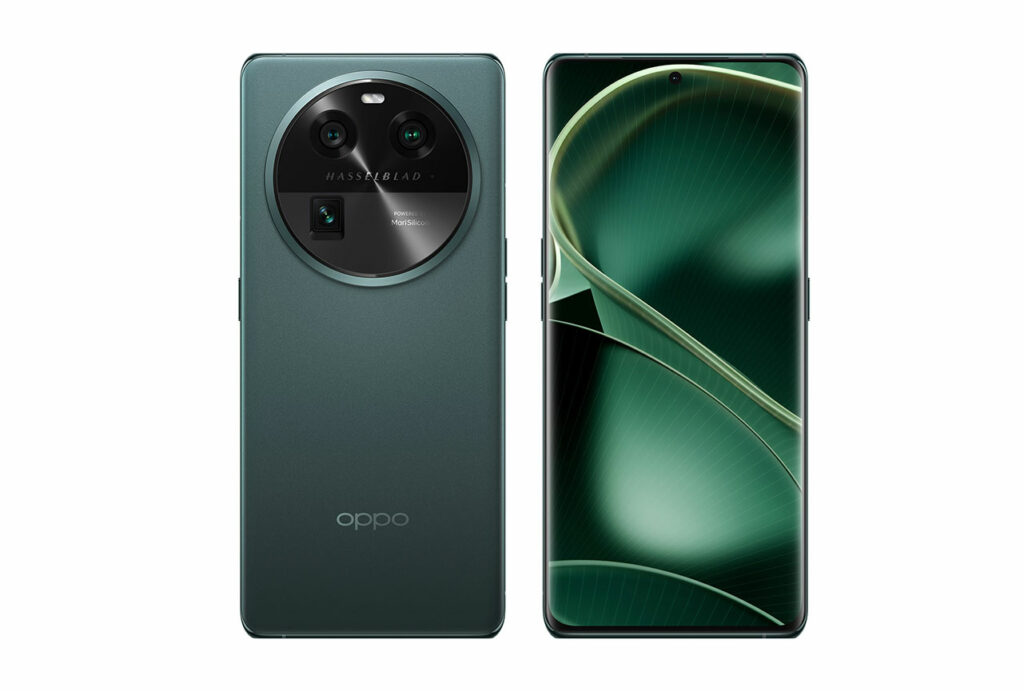




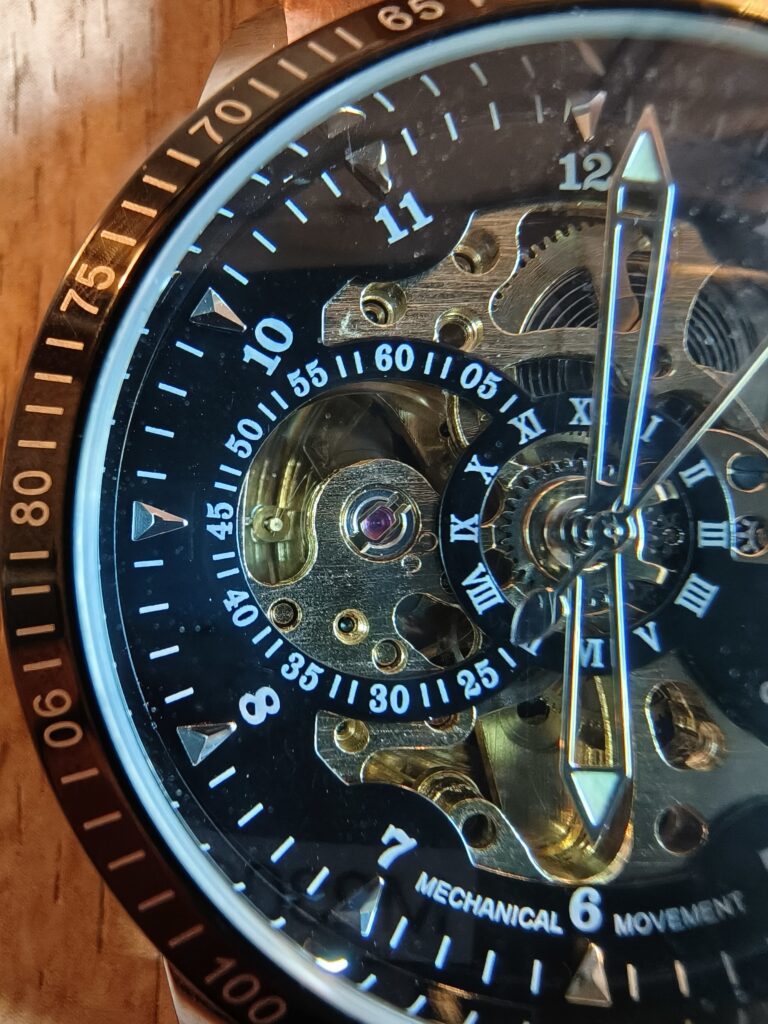
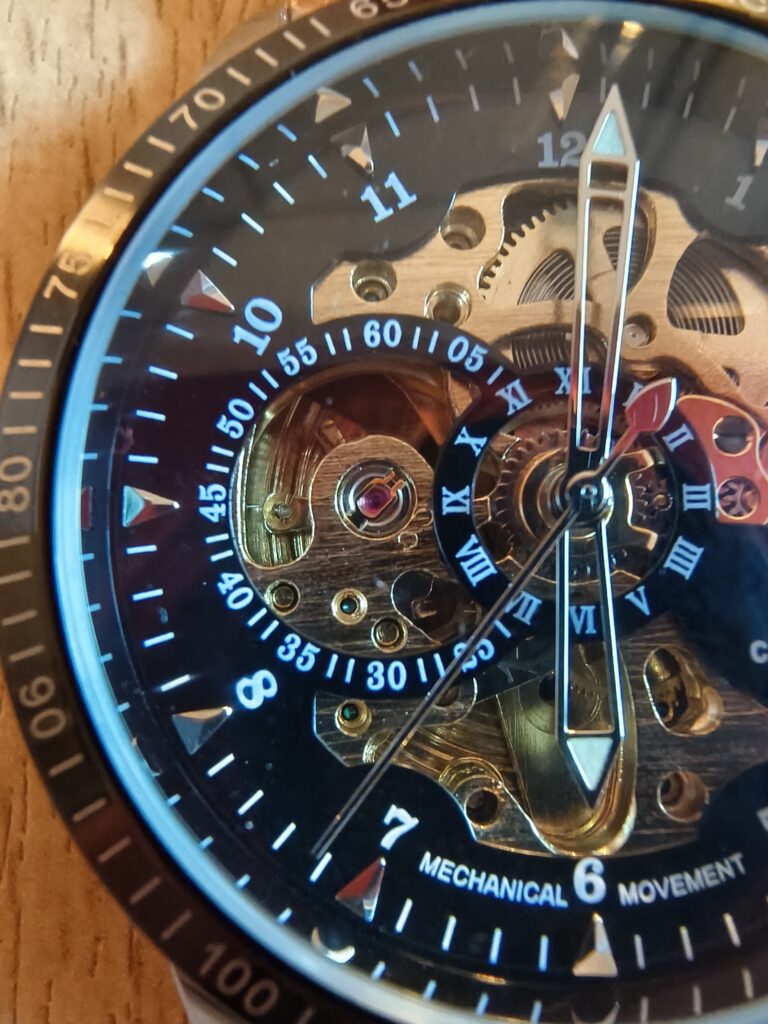
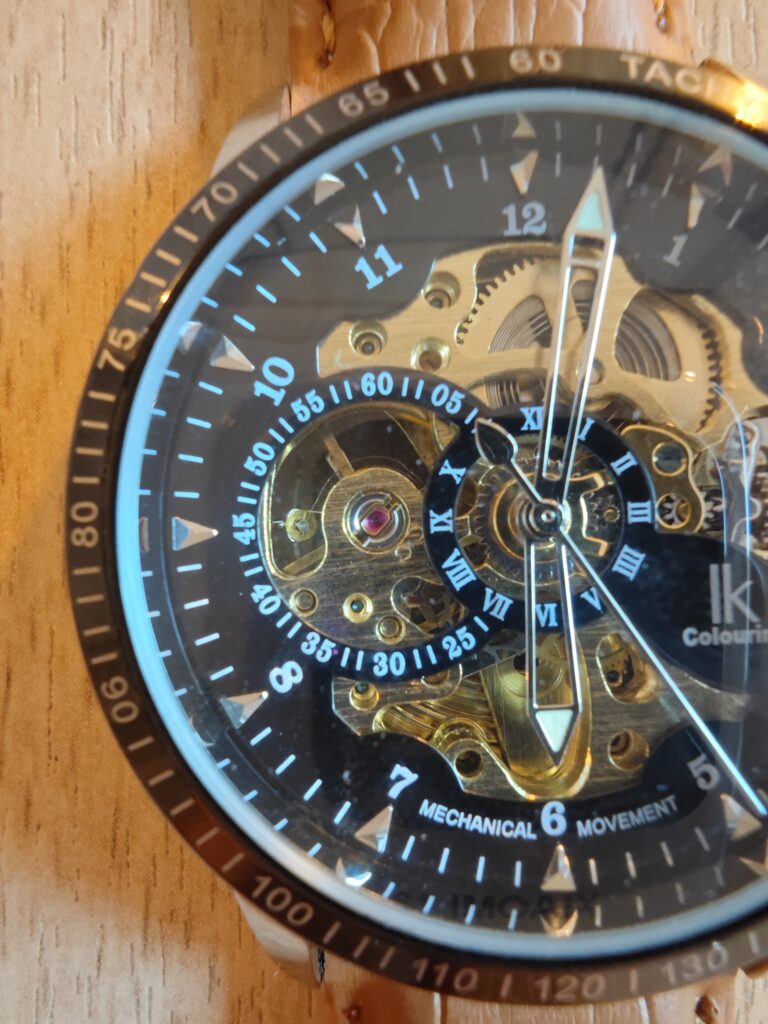


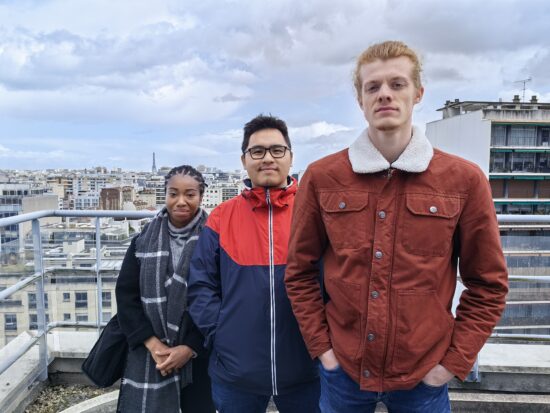







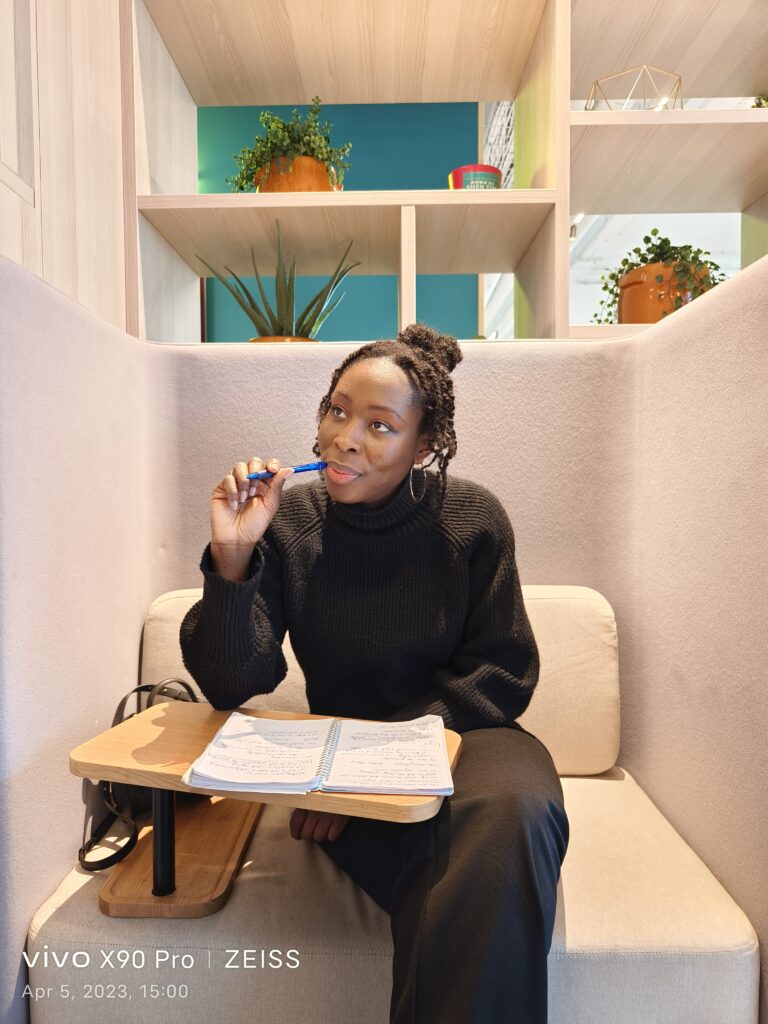






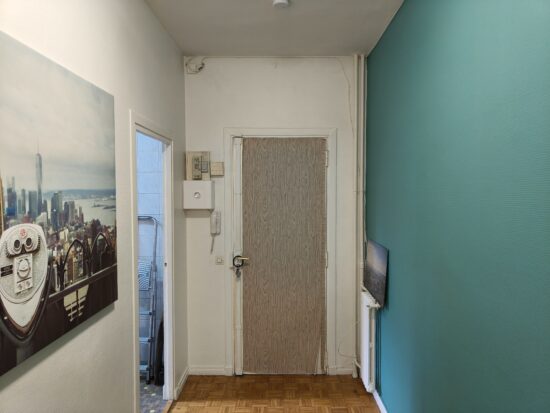
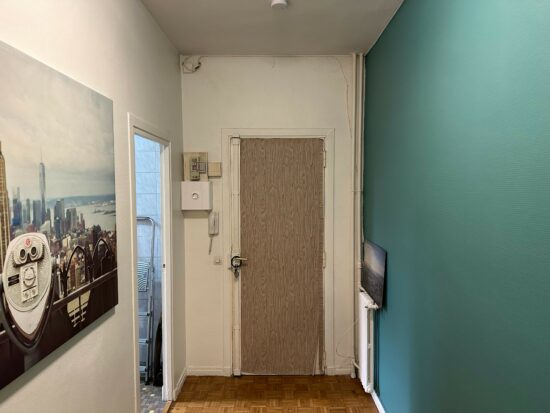
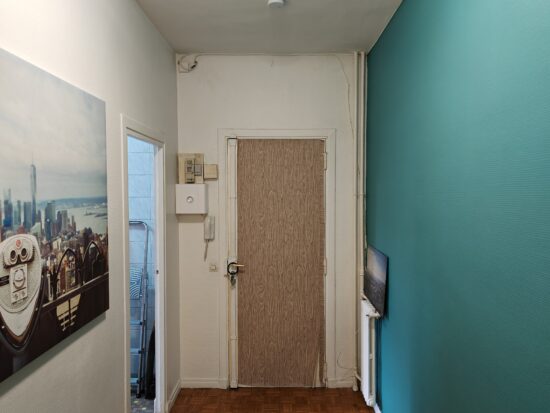











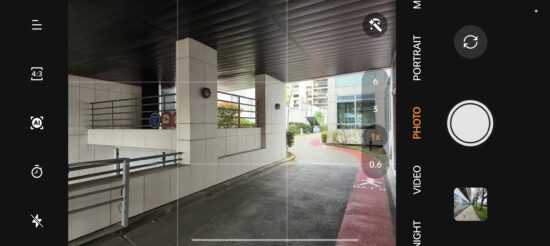

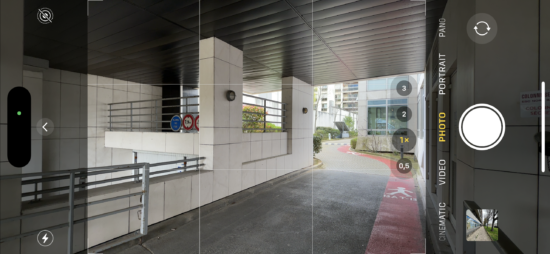



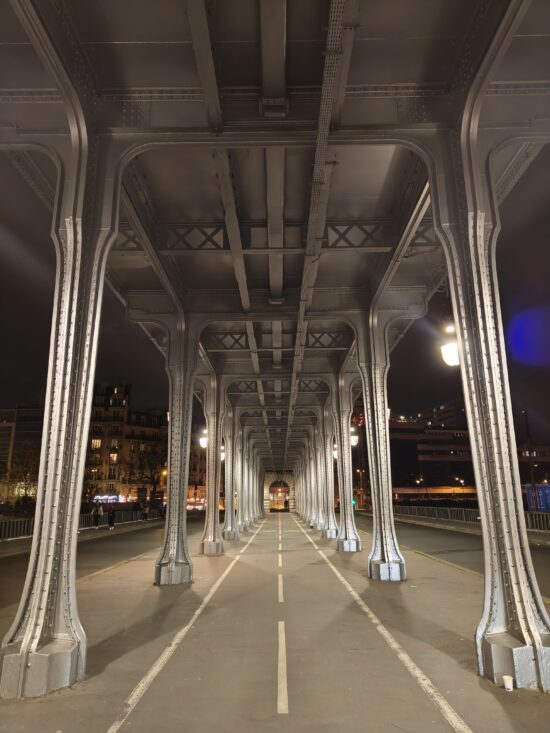
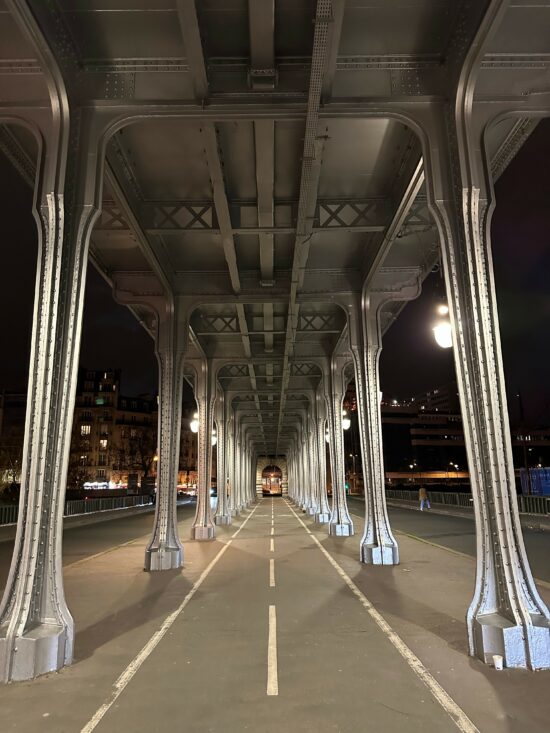




DXOMARK encourages its readers to share comments on the articles. To read or post comments, Disqus cookies are required. Change your Cookies Preferences and read more about our Comment Policy.